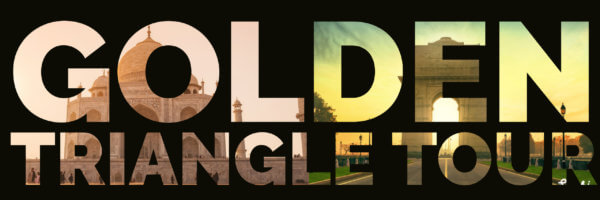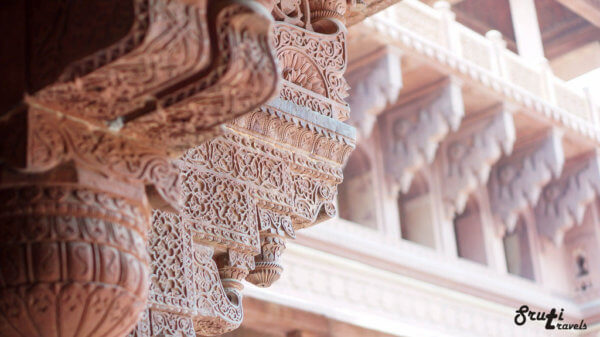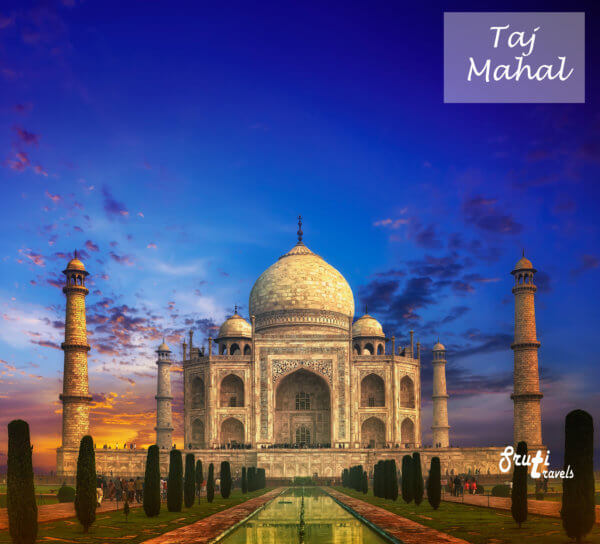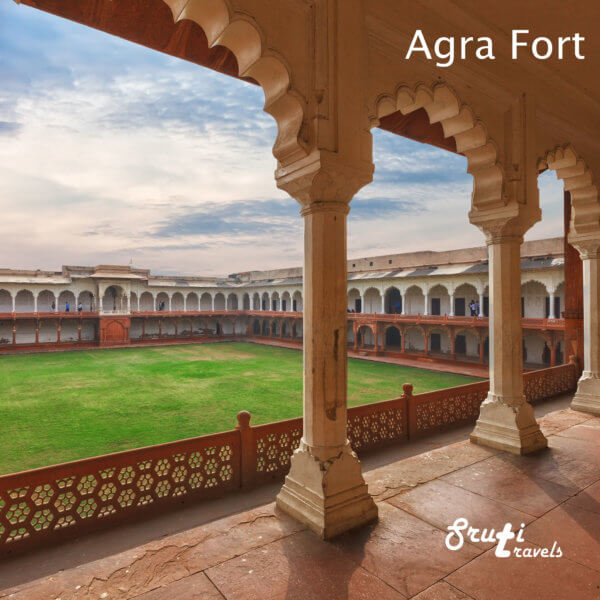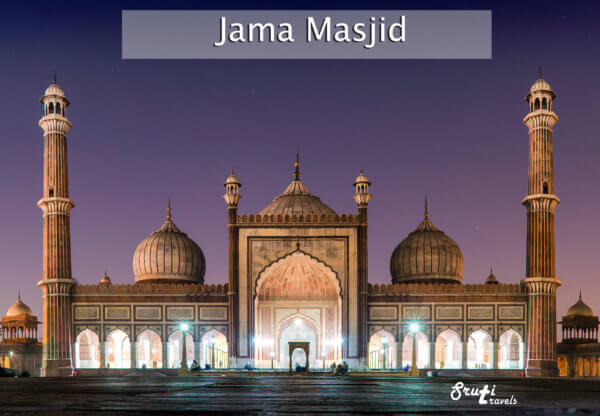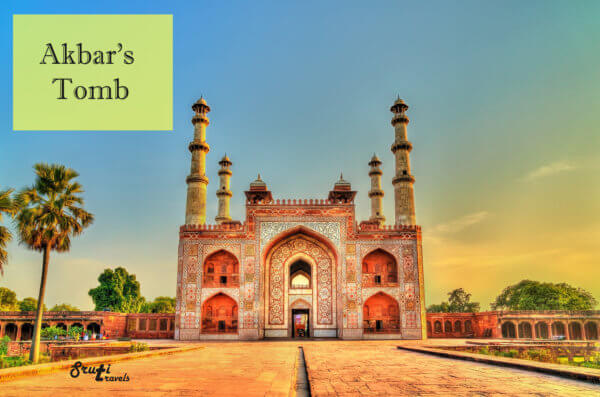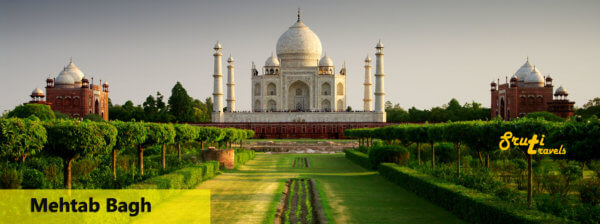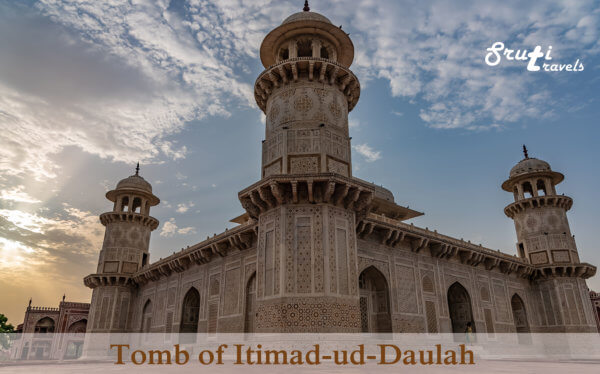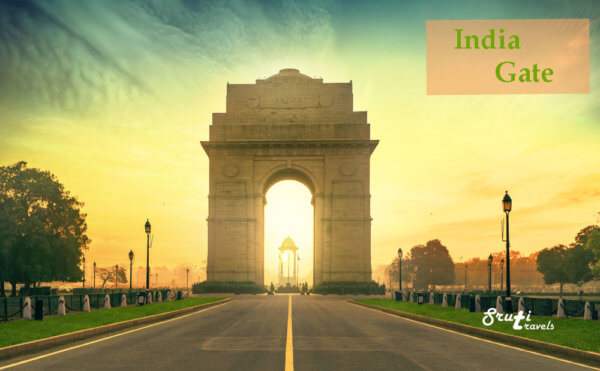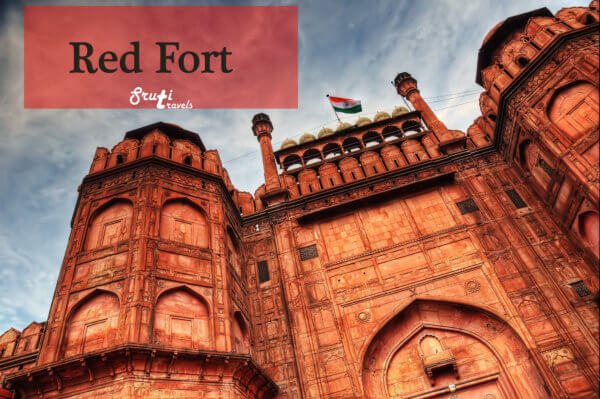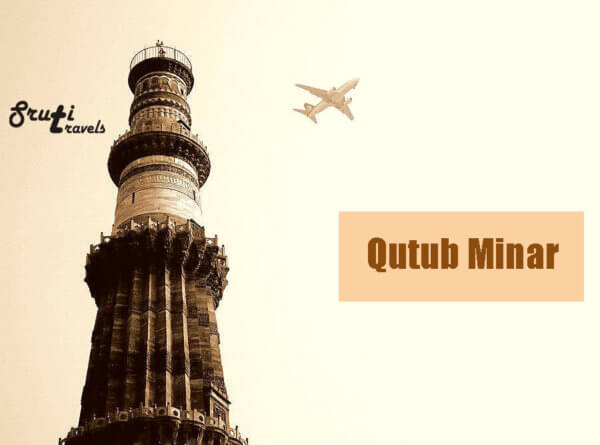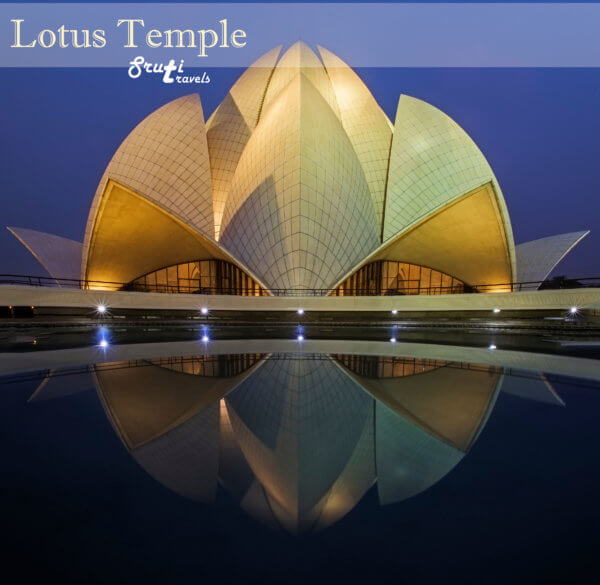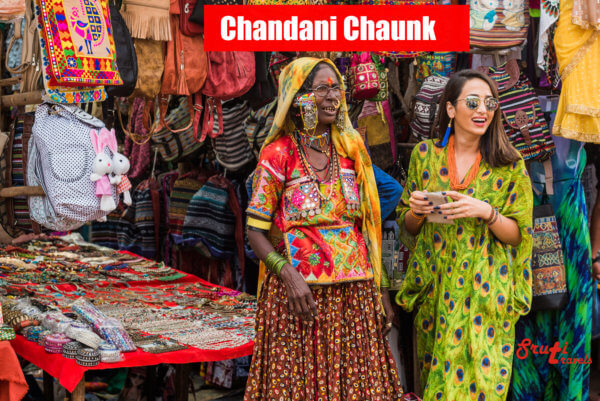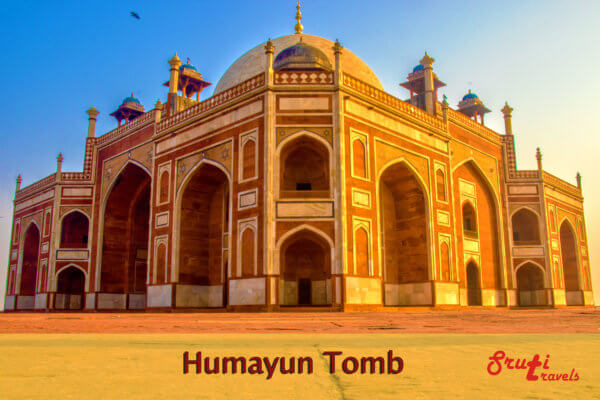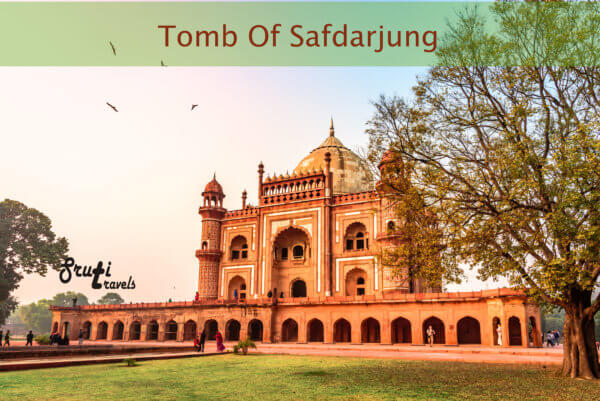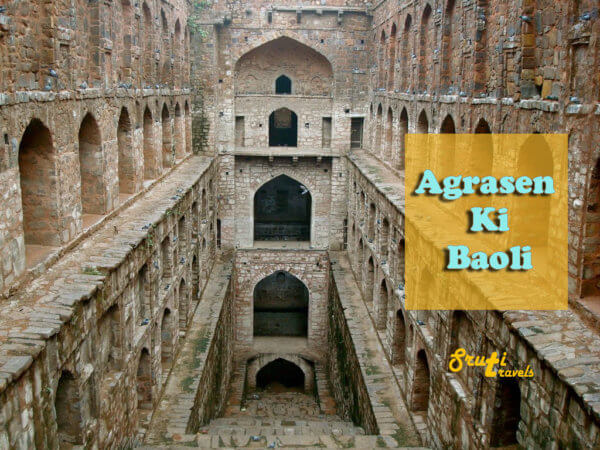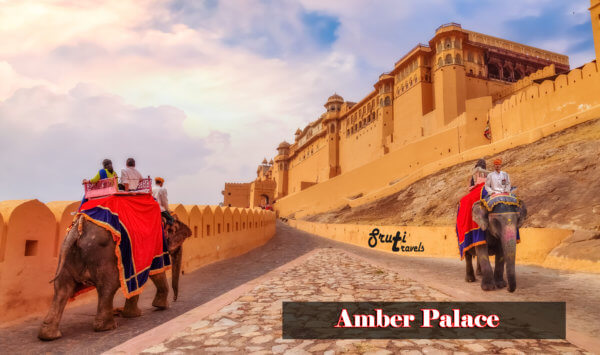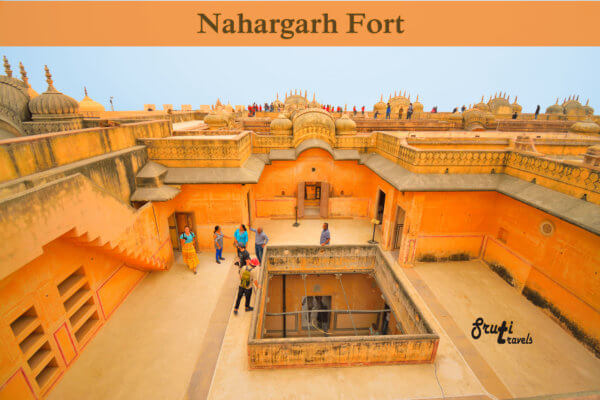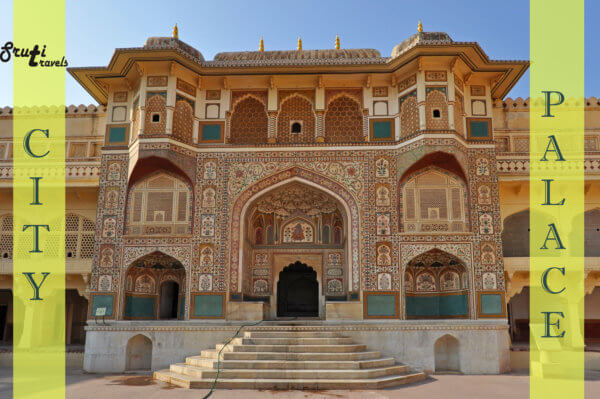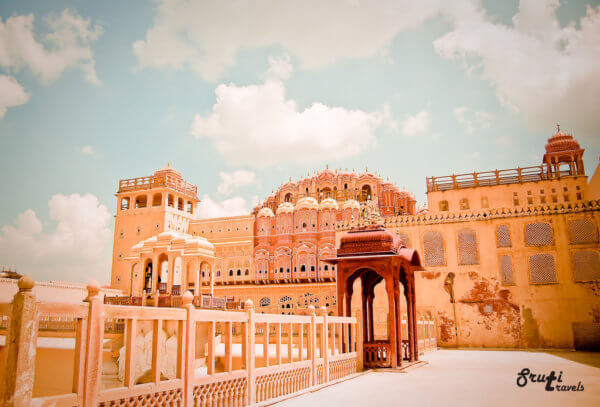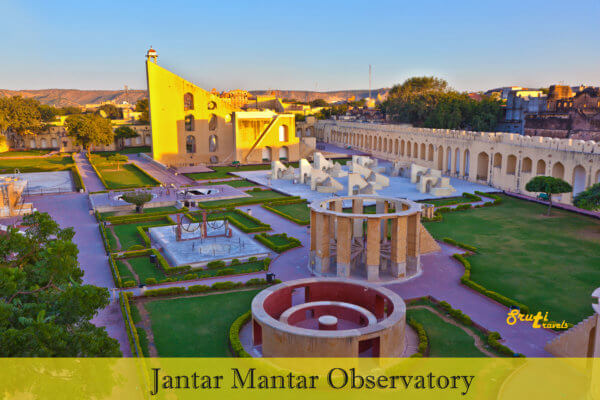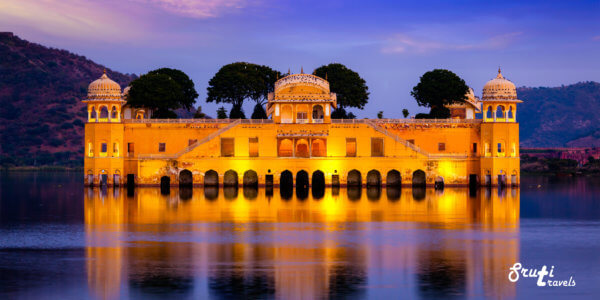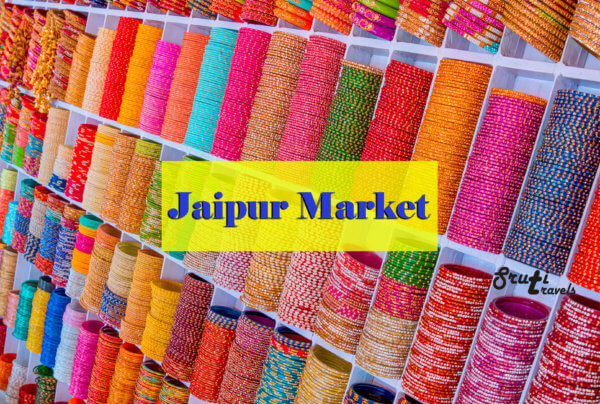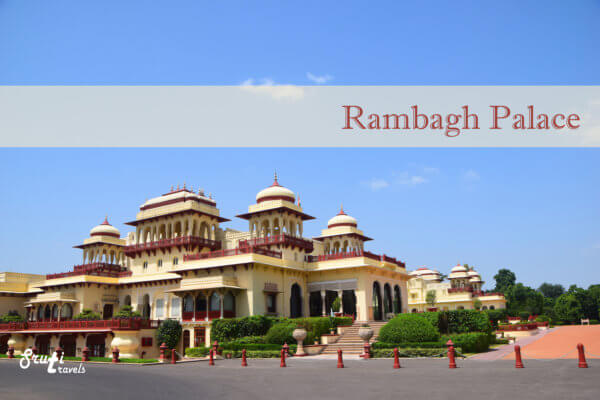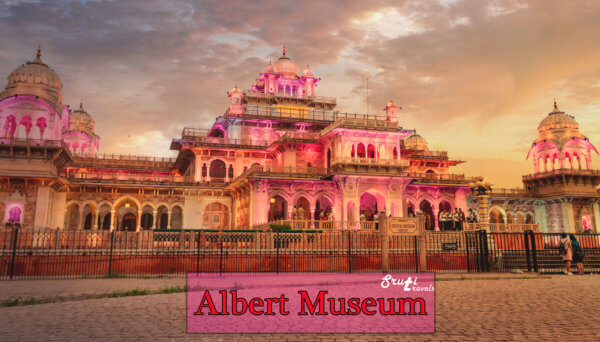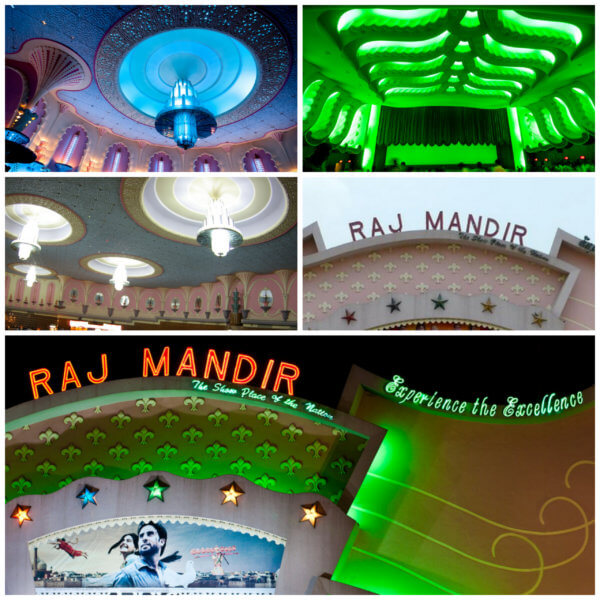Golden Triangle Tour
One of the most popular if not THE Most popular tour Itinerary in India. This itinerary consists of the World famous Taj Mahal, India’s capital New Delhi & capital of one of India’s most fascinating states Jaipur. This Itinerary is packed with sights & sounds of India that is most appealing. The circuit is shaped in a triangular form hosting the many wonders of India. Be it one of the Seven Wonders of the World, Indian Maharajas, Majestic Indian Palaces, Bustling Indian Bazaars, Religious diversity or Indian charm, you find them all here in this tour.
Agra
Visitors from the World over come to Agra more than any other place for one certain white monument. The Taj Mahal is a testimony of everlasting love and visitors are spellbound in agreement. Apart from the Taj, Agra has got the Agra Fort and other fabulous monuments. A visit to Agra will get you your favourite picture and a fascinating experience.
Fatehpur Sikri
En route between Jaipur and Agra, Fatehpur Sikri is a building haven. A city of special interest to Akbar, it’s got some famous monuments and can be termed with equal footing to the neighbouring city of Agra. The Architecture is Indo Islamic and more local. Buland Darwaza, Jama Masjid, Tomb of Salim Chishti, Diwan-i-Aam, Diwan-i-Khas and many others are a student’s delight.
Taj Mahal
One of the most popular tourist destination in the world, Taj Mahal, one of the seven wonders of the world and being declared a World Heritage Site by UNESCO in 1983 arracts around four million visitors annually. Commisioned by Mughal Emperor Shah Jehan (1628-1658) in the memory of his favourite wife Mumtaz Mahal took 21 years to be constructed. It’s a must include place in Delhi-Agra-Jaipur Tour Package. Its architectural designs are combination of Mughal and Persian and the whole structure is made using marble. The best time to visit Taj Mahal is early morning for its divine sunrise landscape.
Red Fort or Agra Fort
Situated near the gardens of the Taj Mahal, Red Fort is an ode to the rich legacy of Mughals. Agra Fort has walls that surround for at least two kilometers and more. Inside are many splendid palaces such as Jahangir Palace and Khas Palace grand hall of audiences called Diwan-i-Khas. Also on location are a couple of magnificent mosques. It is one of the top places in the Itinerary of Golden Triangle. The Muhammad Burj inside the tower is in octagonal shape. The Agra Fort was built in 1565 under the aegis of Akbar. Situated on the right bank of the Yamuna River, this fort and the Taj form a unity of monuments.
Jama Masjid
Of places to visit in Agra, the Jama Masjid is a magnificent structure. The original name of this construct was Masjid Jahan Numa. Built by Shah Jahan, the very best of artisans, sculptors, engineers and thousands of labourers were used in the construction effort. Situated in the old city market of Johri Bazaar, Jama Masjid is located less than 1 km from the famous Amer Fort. Built in AD 1569, by Bharmal, the then king of Amber according to the order of Emperor Akbar, Jama Masjid Jaipur like Jama Masjid in Delhi and Agra is of historical importance and is a protected monument under the Archeological Survey of India (ASI).
Akbar’s tomb
Another spectacular example of Mughar Empire can be found in Akbar’s Tomb also called Akbar Ka Maqbara. It is located in the basement of Sikandra Tomb spread around 119 acres of land.. Akbar himself started its construction and was completed by his son Jahangir. The whole structure is made using white marble and red sandstone. This tomb lies amongst interesting tourist places in Agra.
Mehtab Bagh
The square shaped garden measures 300 x 300 metres and was the last to be built n banks of Yamuna River . It is said that for Mehtab Garden , Shah Jehan chose an ideal spot for viewing Yamuna River and watching the reflection of Taj Mahal in its pool and was made as an extention to Taj Mahal. The garden was also made with an idea of being moonlit at night and hence the name Mehtab. This garden completely defines imagination put to reality.
Tomb of Itimad-ud-Daulah
Also known as mini Taj or Baby Taj, Tomb of Itimad-ud-Daulah has been constructed with same carvings as a draft of Taj Mahal. The tomb is surrounded by beautiful gardens that make it the perfect site to relax and experience the beauty of an old era that was rich in art, culture, and history.
Attractions of New Delhi
The Capital of India is a bustling metropolis flushed with History, Culture, Politics and Contemporary events. It’s a melting pot of people from different backgrounds – religious and cultural. Being a centre of all major invaders from the sultanate and the Mughals to the British, its got some famous monuments that tell many stories.
It’s inhabitants have created a unique Dilli experience that can be summed up only for delhites. From the Eateries to Monuments to Art Galleries, the visitor is sure to experience adrenalin that would be unique to this city.
India Gate
The most important destination to see in Delhi is India Gate. Formerly known as Kingsway and originally knoiwn as All India War Memorial, India Gate was built to commemorate the 82000 soldiers of the Indian Army who lost their lives during the First World War happened from 1914 to 1921. Situated at Rajpath, the architectural dimensions of the structure say that it is 42 meters tall and 9.1 meters wide. It was constructed using yellow and red sandstone along with granite. India Gate Parade or the Republic Day Parade is the most ceremonious and prestigious event to happen in front of India Gate every year on January 26th.
Hauz Khas
One of the major tourist places in Delhi, Hauz Khas is a beautiful neighbourhood of South Delhi. The historically important Hauz Khaz Complex also known as mehak ka chota quila, has witnessed different diplomatic missions like the Albania, Iraq, Guines, Burundi, Macedonia Missions and more. It exhibits both rural and urban atmosphere. The location is surrounded by Green Park to the west and Gulmohar Park towards the north.
The Hauz Khas Village complex will is open on all days from Monday to Saturday from 10:00 am to 07:00 pm.
Red Fort
The Mughal families lived there until 1857. A golden feather in the crown of Delhi is the historical Red fort and it houses several museums in it’s brilliant architectural beauty. It was housing the emperors of Mughal Dynasty for 200 years .Amidst of a lot of political significant events that took place at Red Fort, the one that made the fort famous was the midnight speech made by Jawahar Lal Nehru before India was going to wake up to independence from British rule. In 1639, Shah Jahan who was the Mughal emperor then, laid the foundation stone to build up the fort and shifted his capital.A spectacular show regarding the history of Red Fort and the capital Delhi is shown at the fort at 06:00 pm for one hour every evening in Hindi and English with a half an hour gap in between the two shows.
Qutub Minar
Qutub Minar holds a valuable position when it comes to major landmarks of India. A segment of Qutub Complex, which has been declared as a UNESCO World Heritage Site is situated in the Mehrauli area of Delhi. Qutub Minar has an amazing architectural structure with features as the 379 stepped spiral staircase. It is made using red sandstone and marble making its height up to 73 meters and gives a tower like structure to it which is consisted of five stories and its diameter is 14.3 meters at the base and it becomes 2.7 meters at the top.
Qutub Minar entry fee for Indian citizens is Rs. 30 and for foreign nationals is Rs.500.
The Lotus Temple
A perfect example of absolute and undeniable beauty of the architecture, The Lotus Temple aatracts tourists from all over the world and is sought out to be a major attraction of Delhi. As the name says, the temple resembles a lotus flower built on 27 free-standing marble clad petals in clusters of three to form nine sides and is white in color. The temple signifies harmony through a common place of worship and is open to all regardless of caste or religion.
Chandani Chaunk
Like Red Fort and Jama Masjid, the foundation to Chandni Chowk was also laid by Mughal Emperor Shah Jahan in the 17th century though it was designed by his daughter Jahanara. Divided by canals to reflect moonlight owing to its name Chandni Chaunk (Moonlight Square), it is the largest wholesale market of Delhi and hence the busiest market in Delhi. The Red Fort is a part of it. A must visit in CP is the Parantha Wali Gali and the famous Natraj Chat and Dahi Bhalle.
Rashtrapati bhawan
Formerly known as the Viceroy’s House, the famous Rashtrapathi Bhavan is the official Presidential Residence in Delhi. Located at the western end of Rajpath, this 130 hectare Estate constitutes mainly the mansion or the main building accommodateswhich the president’s official residence, halls, guest rooms and offices and includes huge gardens known as the Mughal Gardens, large open spaces, a residence of office staff and bodyguards, stables etc. The design of the building was inspired by the Edwardian Baroque. There is a dome in the middle that reflects both Indian and British styles.
Jama Masjid
Fondly called as the Jama Masjid by the people of Delhi becaue they consider the Masjid-I Jahan Numa close to them, it is one of the largest mosques in India. It was built by Mughal Emperor Shah Jahan between 1644 and 1656 , the construction of the mosque took around 1 million rupees then. The mosque is protected by three great gates and four towers. There are two 40 meter high minarets surrounding the three domes on the terrace created on red sandstone and white marble standing and is protected by 4 towers and 3 huge gates. The best time to visit the mosque is during the morning hours as there is no crowd at that moment. Its compulsory for women visiting to wear scarves to cover their head. Also, the fake guides might lure the travellers to make them enter at fewer cost whereas the entry fee is zero. But you’ll be charged 200 for clicking pictures on the inside.
Humayun Tomb
Tomb of famous Mughal emperor Humayun , commissioned by his first wife Empress Bega Begum, Maqbera e Humayun or the Humayun’s Tomb built in 1570 is a major attraction of Delhi. The Taj Mahal owes its design to this tomb. Located in Nizamuddin East in Delhi, it’s declared as a world heritage site under UNESCO . Not just the grave of the Humayun, but this tomb also subsumes/embraces the graves of Bega Begum, Dara Shikoh, Hamida Begum, along with other significant Mughals members. The tomb is made of red sandstone and white marbles and its serenity makes it unarguably one of the most amazing works of Mughal Architecture.
Entry fee is INR 10 for domestic and SAARC Visitors, INR 250 for others
The Tomb of Safdarjung
Named after the Prime Minister of Mughal Empire in 1748 Safdarjung,Safdarjung’s Tomb is a famous landmark of Delhi. Made of sandstone, the domed and arched red-brown and white coloured structure depicts the late Mughal Empire style. Safdarjung was the viceroy of Muhammad Shah. It holds an interestimng history with Ahmad Shah Bahadur was on the throne in 1748 and Safdarjang was made the Vizier.But he started ruling and grabbed all the powers when the empire was on its verge of declining. But later, the king had Safdarjung out of their kingdom and Delhi.
Safdarjung’s tomb entry fee for Indians is Rs.15 and for foreigners: Rs.200.
Agrasen Ki Baoli
Also known as Ugrasen Ki Baoli, this place is one of the coolest places to visit in Delhi. It became quite popular after Amir Khan’s PK movie and on the other hand is also infamous for its haunted activities at night. This 60-meter long and 15-meter wide step well in Connaught Place attracts many. You must pay a visit to this place while exploring the lanes of CP.
Places to see in Jaipur
Pink City, Jaipur is the capital and the largest city of Rajasthan. Founded my Maharaja Sawai Jai Singh II in 1727. Jaipur is one of the finest planned cities of India, located in the semi-desert lands of Rajasthan. The city which once had been the capital of the royalty now is the capital city of Rajasthan. The very structure of Jaipur resembles the taste of the Rajputs and the Royal families. At present, Jaipur is a major business centre with all requisites of a metropolitan city.
Amber Palace
Amber Palace, surrounded by breathtaking Aravalli Hills, is one of the most popular Jaipur Attractions. This magnificent palace boasts of its symmetrical garden, enticing Mirror room(Sheesh Mahal), the enigmatic abstract paintings, frescos, picturesque sunrise and sunset, bewitching use of jewels and red sand stone are a not-to-miss sights of Jaipur’s timeless beauty. It’s foundation was laid by Raja Man Singh I and later completed by Mirja Raja Jai Singh. A breathtaking view of this palace is when every ray entering in its Sheesh Mahal illuminates the entire hall. It definitely is one of the most spectacular places to visit in Jaipur. Sanjay Leela Bhansali’s Bajirao Mastani’s scenes being shot here has put this Palace in limelight.
Visiting Hours: 8:00 a.m. to 5:30 p.m.
Entry Fee For Indians: 25Rs. (Inclusive of Entry & Camera )
-Foreign Nationals: 150 Rs. (Inclusive of Entry & Camera)
Nahargarh Fort
Situated high up on the Aravali hills, Nahargarh Fort which means Abode Of Tigers is one of the major attractions of Jaipur. Its foundation was laid by Jai Singh II to tighten the security of region and providing safety shelter to the British wives during the Sepoy Mutiny of 1857. Its most enchanting view from the whole city at night makes it a popular spot for sightseeing in Jaipur. It’s a popular destination for summer excursions inJaipur and also serves best as a great picnic spot in the city of Jaipur.
Entry:
- Foreigners: INR 50 for adults, INR 25 for students
- Indians: INR 20 for adults, INR 5 for students
Visiting hours: 10:00 am – 5:30 pm
City Palace
Located in the heart of Jaipur, City Palace is the most remarkable monument in the list of places to visit in Jaipur. Upon visiting the magnificent City Palace, it’s easy to see that the royal family of Jaipur was one of the richest in India. The palace’s huge complex of courtyards, gardens, and buildings blends both Rajasthani and Mughal architecture. The royal family lives still lives there, in the graceful Chandra Mahal. It’s possible to access the private rooms, with a personal guide, for an additional cost. Also inside the City Palace complex is a museum, art gallery, and interesting displays of royal costumes and old Indian weapons. A new exhibit dedicated to paintings and photography was recently added, including old photos of the woman of the palace. In addition, note that it’s now possible to visit the City Palace at night and see an outstanding sound and light show.
- Entry Cost: There are various ticket options for the City Palace, depending on how much of it you want to see. Prices start from 130 rupees for Indians and 500 rupees for foreigners. Museum at night tickets cost 900 rupees for foreigners and 450 rupees for Indians.
- Hours: 9.30 a.m. to 5 p.m. daily. And 7 p.m. to 10 p.m. for night viewing.
Hawa Mahal
Hawa Mahal or the Palace of the Winds is the most remarkable Palace of Jaipur. This exclusive 5 storied architectural structure was built by Maharaja Sawai Pratap Singh and has 953 small windows called Jharokhas representing the crown of Hindu God, Lord Krishna. It was built in 1799 for royal women to observe the bustling streets without being seen, the honeycomb shaped palace is now one of the most iconic buildings in Jaipur.
Jantar Mantar Observatory
Jantar Mantar literally means the calculation instrument. It was built by Maharaja Sawai Jai Singh II between 1727 and 1734 after completing the major milestones of city Jaipur. Jantar Mantar Observatory has 14 astronomical structures which measures time, predict eclipses and track stars and Earth’s movement around the sun. The biggest of these is the Samrat Yantra which if 90 m tall and largest sundial in the world. The time for eclipse and arrival of monsoons can be calculated using its shadow. Jantar Mantar now serves as one of the major Jaipur tourist places.
Jal Mahal
It was during the Rajput era that India has seen some of the glorious forts and palaces. A classic palace enlisted under Rajputana architecture is Jal Mahal or the Water Mahal. It is definitely a must see place in Jaipur. A five storey structure and built in red sanstone in the middle of Man Sagar Lake is an important Jaipur tourist palce. Traditional boats are used to reach to this palace.When the lake is filled, out of the five stories, four remains underwater and thus offers a breathtaking view. This palace offers a perfect fusion of Mughal and Rajput styles of architecture. Jal Mahal is home to some of the colourful migratory birds like flamingo, Great Crested Grebe, Pintail, Kestrel, Coot and Grey Wagtail.
Jaipur Markets
An ideal place to spend time in Jaipur is to explore its local market and experience the vibes of the Pink City. These markets has numerous stories about its glorified history engraved in every corner. The two main markets of Jaipur are Johri Bazaar and Bapu Bazaar. Built by the founder of Jaipur, Johri Bazaar is the oldest largest and busiest shopping mall where you can get precious gemstones, timeless jewelleries, beautiful bangles, finest sarees and list constinues. The gemstones found here are costliest in the world.One of the largest camel market in the world, Bapu Bazaar is known for its leather goods and Morji shoes. An excellent place to shop is the wholesale flower market (phool mandi) just inside Chandi ki Taksal gate in the Old City where you’ll find an enticing variety of goods. It’s on from 6 a.m. Maniharon ka Rasta is an entire lane full of lac bangle makers.
Rambagh Palace
The former residence of the Maharaja of Jaipur, Rambagh Palace is a luxurious building of Jaipur. A beautiful amalgamation of Rajput and Mughal culture in its architecture takes you back to the glorified days of Mughal families is visible in this palace. Now it is reestablished as a hotel by Taj.
Entry timings: since it is a hotel right now, you can go and book the rooms to stay there at any time.
Albert Museum
To honor the visit of the Prince of Wales, the foundation of Albert Museum was laid in 1876. After the commencement arose confusion about the usage of this hall. In 1880, Maharaja Sawai Madho Singh II who was ruling Jaipur opened a museum within the hall following the suggestion of Dr Thomas Holbein Hendley. Started from displaying products of local craftsmen, the museum has now gained its popularity to international level. One of the six ‘Egyptian Mummies’ in India has been kept here.
Raj Mandir Cinema
Raj Mandir often called the Pride of Asia, affirming a capacity of 1300 audience is am important location of Jaipur city. It was built in 1976 and on Bhagwan Das Road. W M Namjoshi while designing wanted the building to reflect the culture and tradition of Jaipur gracefully in Art Modern Style. Exotic Rajasthani delicacies and cuisines being served inside its cafeteria and the lighting system adds to your wonderful experience in Raj Mandir.
Delhi,Agra & Jaipur Itinerary
Day1: Arrive in New Delhi; tour includes:
b) Tour Rashtrapati Bhavan
c) Qutub Minar
d) Lotus temple; overnight in New Delhi.
Day2: Leave for Agra early morning: tour of Agra includes:
b) Agra Fort.
c) Tomb of Itimad-ud-Daulah.
d) Ram bagh; overnight in Agra
Day3: Leave for Jaipur
b) Arrive in Jaipur; include your evening of cultural programs at ChokiDhani
Day4:Jaipur sightseeing including:
b) HawaMahal
c) Observatory (JantarMantar)
d) City Palace & Museum
e) Gaitore “ Cenetophs (Front View)
f) Nahargarh Fort & Palace (Lunch is available)
g) Amber Fort & Palace; overnight in Jaipur.
Day5:
• Leave early afternoon for Delhi to Akshardham Mandir.
• End of tour.
Delhi-Agra-Jaipur Package Rates
|
|
|
|
|---|---|---|---|
| Sedan (4 Seater) | 2 | 16,800 | 19,600 |
| Sedan (4 Seater) | 4 | 12,300 | 13,400 |
| Innova (6 Seater) | 6 | 9,500 | 12,100 |
| Tempo Traveller (11 Seater) | 10 | 8,200 | 9,300 |
All rates are per head. Rates depend on different class of Hotels used & no. of people traveling. Rates can differ depending on different modes of transport, i.e by Air, Road or Train.
1) Dedicated A/C Transport Car/Traveller provided from Delhi to Destination and back to Delhi.
2) Accommodation – 3 Star, 4 Star or 5 Star depending on your budget of choice.
3) Includes Breakfast.
3) All sightseeing points mentioned in the Itinerary covered by Car.
4) Guide services for select destinations
5) Instant telephonic help from Sruti Travels personal.
6) Last minute flexible itinerary.
7) Hotels like Arya niwas, Bansi home, The legend inn and many other options.
Fill the quick contact for a rate.



